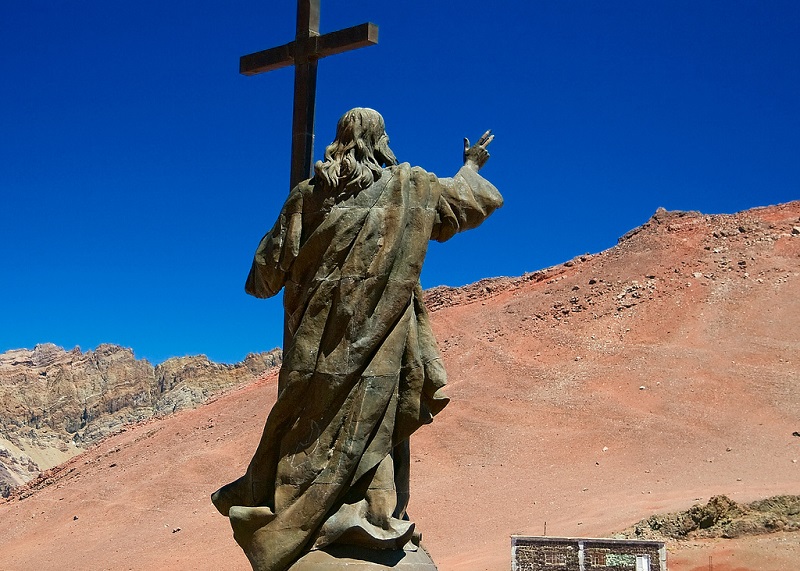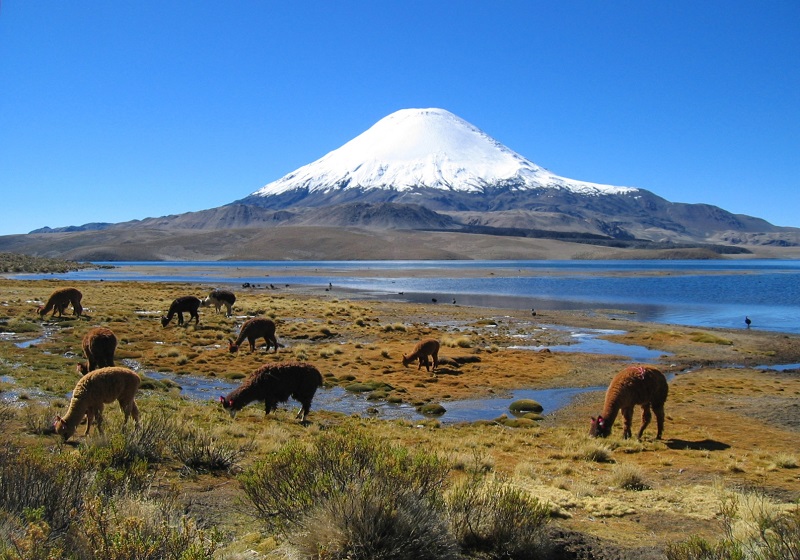Chile: Chungará Lake and the Andean Christ

Christ the Redeemer of the Andes
This monument to the Redeemer, which has stood over 100 years on the border with Argentina, is known as the Andean Christ (when pronouncing it, it is imperative not to lose the “N” at the end). For a long time, the two countries could not decide where the border was. The dispute could have ended in war, but it ended with the unveiling of the monument. This event brought together the inhabitants of both states. So a peace agreement was made. This is why it is on the list of things to see in Chile.
This statue is a symbol of agreement between Argentina and Chile. Its height is 13 meters. Christ watches over the border between states as if guarding peace and the peace of its inhabitants. Several times the statue suffered from adverse weather and seismic activity of the Andes. But the monument was saved from destruction. The site attracts thousands of tourists each year. There is even a trekking route where tourists can see for themselves a symbol of friendship and understanding.

Chungará Lake
Lake Changará is one of the tallest in the world. It is located in the Parinacota region of northern Chile on the territory of the Lauca National Park. The lake has a surface area of 21.5 hectares and a maximum depth of 33 meters.
At an altitude of 4,517 m above sea level, the lake lies at the mouth of an extinct volcano surrounded by several mountain peaks. Paiyachata consists of the twin volcanoes Parinakota (6342 meters) and Pomerape (6282 meters), Mount Sahama (6250 meters), and the “ever-smoky” volcano Gualyatiri (6070 meters). Chungara is not the only lake in the vicinity: Lake Kotakotani is nearby.
About 8 thousand years ago, the volcano Parinakota erupted, forming Lake Chungara. When the lava was released, it blocked the beds of mountain rivers, creating a unique ecosystem in the basin. There are over 130 species of plants and animals at the reservoir because of its solitude and its unique ecosystem, including some very rare and endangered species. Some of these species can be found along the lakeshore:
- protected uichacha,
- Andean condors,
- llamas,
- Aymara alpacas.
As well as their closest relatives, the vicuñas and the guanaco. Especially noteworthy are the graceful pink flamingos and the numerous species of ducks, some of which are near extinction. Chungara attracts nature lovers with its beauty and mystery. Moreover, the amazing climate in these locations is also impressive: it rarely rains here, but the lush vegetation of the Chungara Lakeshores doesn’t suffer from the lack of moisture – it is supplied by the lake.

According to the Russian translation of the name Chungara, it sounds like “moss on a rock”. The name of the lake is derived from the turquoise color of the water, which contrasts with the stone Andes. On the lake shores, there is also a flowering plant that looks like moss, called Llareta. The scene has become a trademark of Chungara Lake, adorning some of its most famous photographs.
How to Get There
It is located about 54 kilometers east of Putre and 12 kilometers west of the Bolivian border, in the Lauca National Park. The lake can only be reached by land, traveling several hundred kilometers along winding paths. If you are traveling from Arica, you can join a group.
Indescribable beauty of their mountain ranges draws tourists: you can take amazing pictures from here and the surrounding landscapes evoke emotions in anyone who has been on the shores of Lake Chungara. Outdoor enthusiasts can climb to the top of one of the snow-covered volcanoes. Connoisseurs of ancient history and lost places come here also for the ruins of ancient fortresses and other buildings that are hundreds of years old. You can find them on the slopes of the surrounding volcanoes: who built them here and why so high – still a mystery. In addition, you can visit hot springs in the caves of the surrounding mountains.
Near the lake, you can stay overnight in small comfortable cottages, specially prepared for tourist stops. In warm weather you can camp right on the shore, close to the water. The best months to visit Chungara Lake are:
- April,
- May,
- September,
- October.